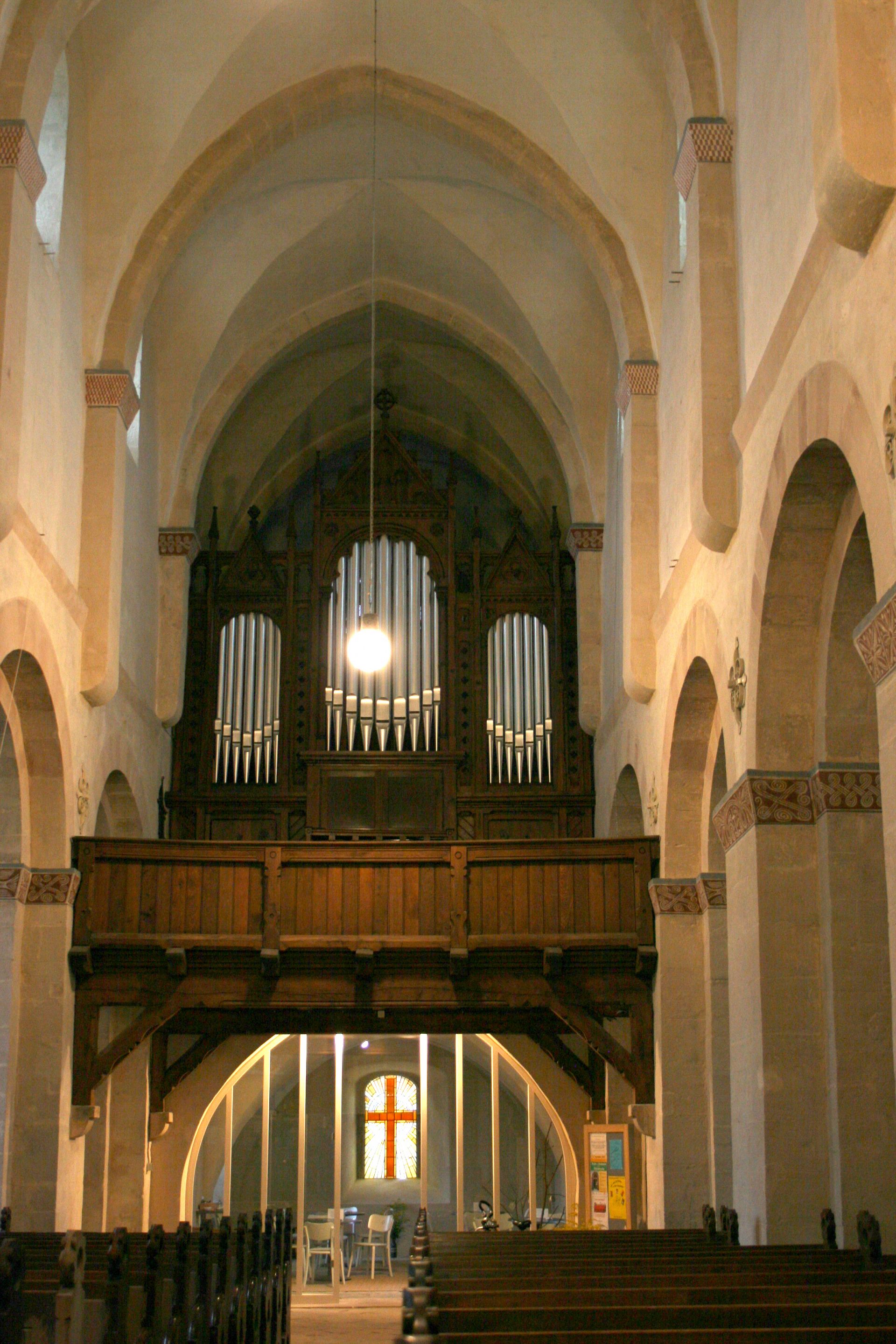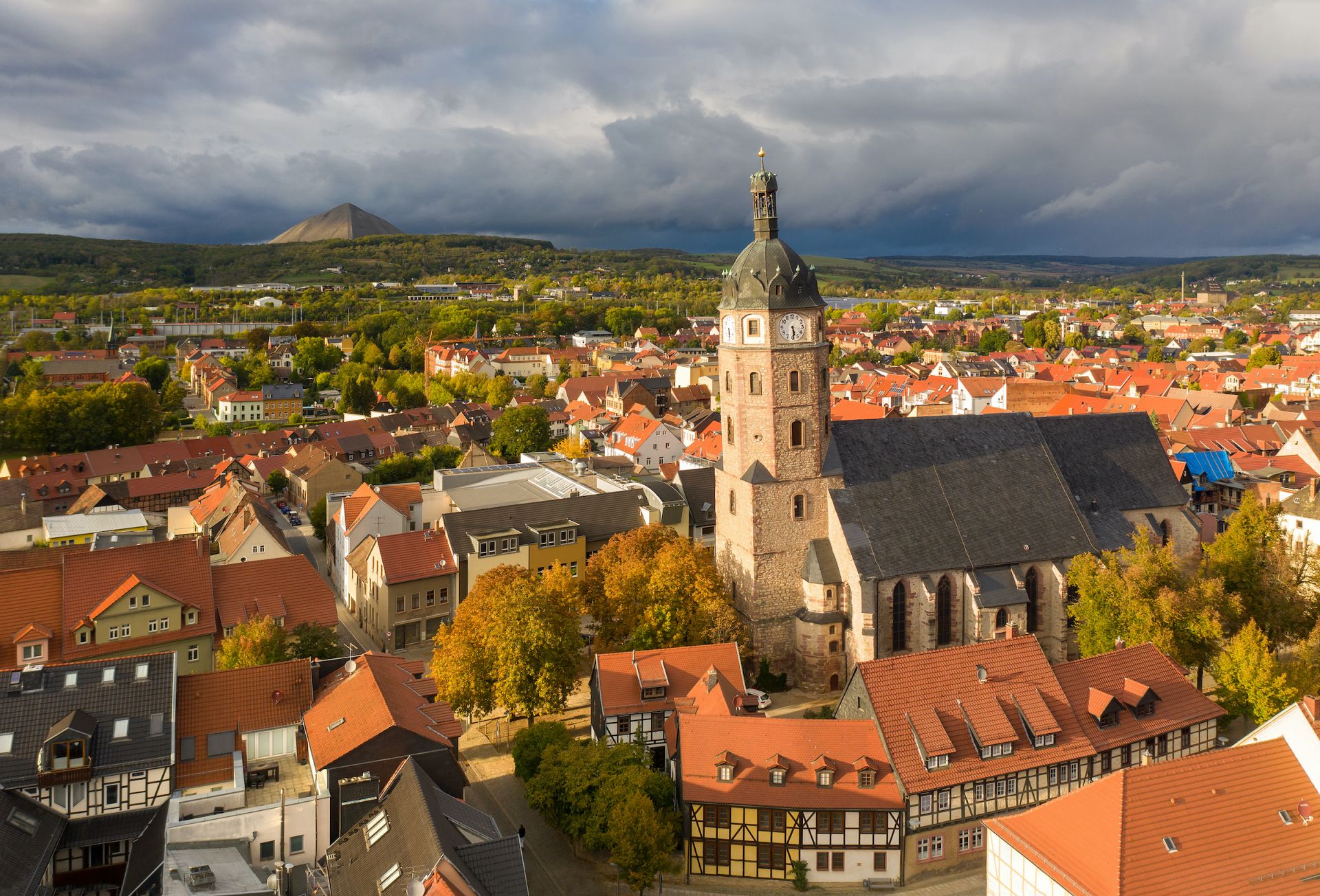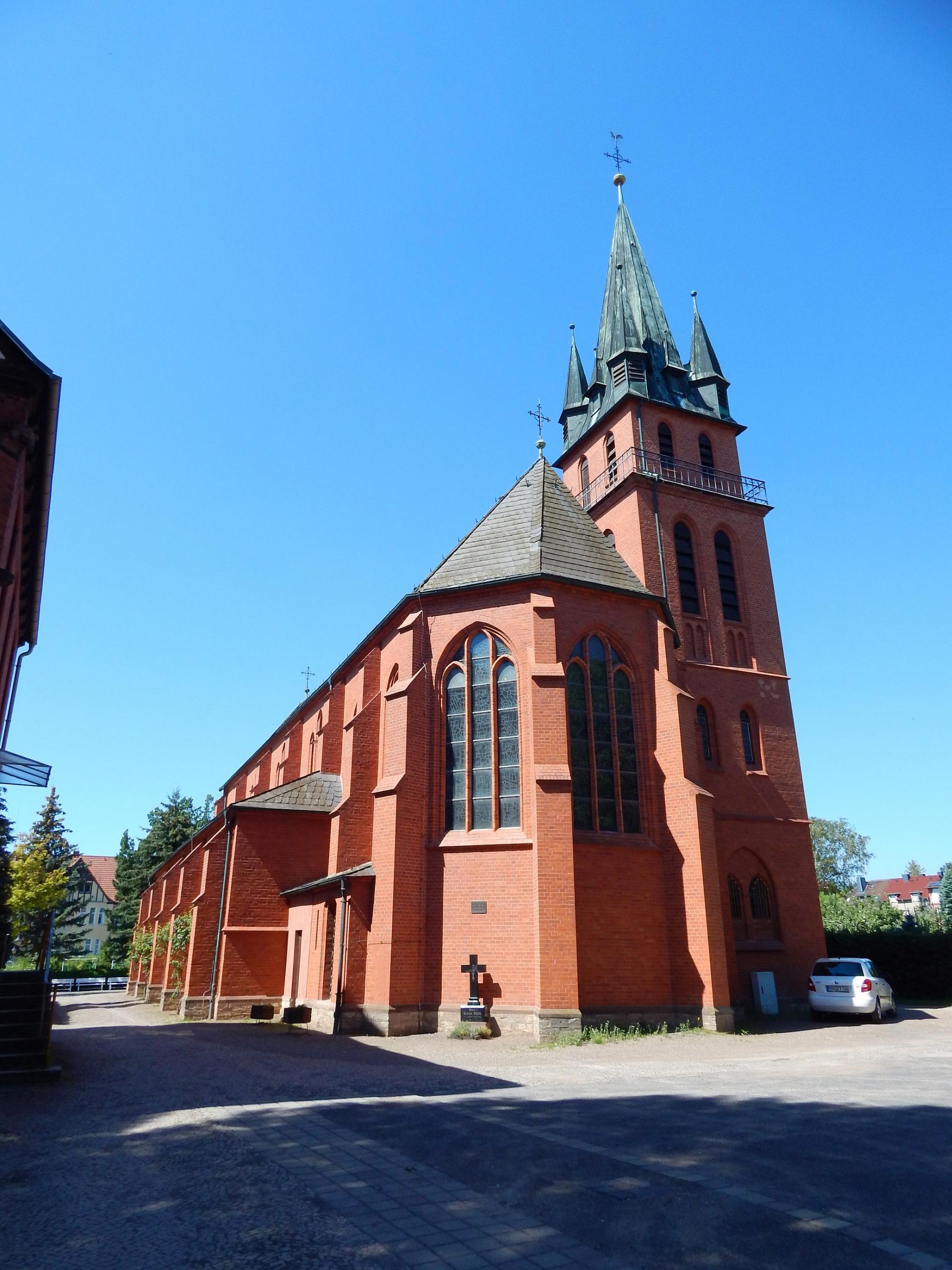Ulrich Church
The Ulrich Church (built around 1116 - 1123) is a three-nave, Romanesque, cruciform, vaulted pillar basilica and the oldest surviving building in Sangerhausen.
The church building is said to have been erected on the basis of a vow by Ludwig II, also known as the Springer, by monks from the Reinhardsbrunn monastery. The special feature of the church floor plan is the eastern end, which is formed by five apses ending in the same direction. Similarities with churches in Hirsau and Cluny can be seen in the construction.
The present Gothic crossing tower dates from the 15th century. The church was a monastery church until 1539. The Cistercian monastery was located immediately to the north.
In addition to the monumental Romanesque architecture, the interior of the church is characterised by the installations from the second half of the 19th century.
In the north transept, there are tombs and epitaphs, as well as a tympanum on the foundation of the church, the remains of a choir screen from 1200 and the bronze baptismal font from 1369.
Since 1993, the Church of St. Ulrich has been a stop on the Romanesque Road of Saxony-Anhalt.






